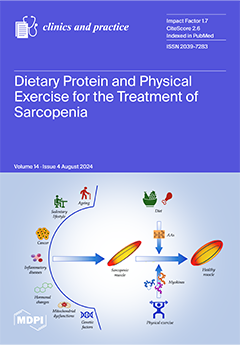Clinical trials, by contributing to the development of diagnostics and to the search for modern, more effective, and safer therapies, have become one of the most important elements of the healthcare system. They enable the introduction of innovative drugs and treatments that can
[...] Read more.
Clinical trials, by contributing to the development of diagnostics and to the search for modern, more effective, and safer therapies, have become one of the most important elements of the healthcare system. They enable the introduction of innovative drugs and treatments that can significantly improve patients’ quality of life. Not only does this research help to understand disease mechanisms, but it also enables the personalization of therapy, which often increases the effectiveness of treatment. Public awareness of clinical trials helps build trust in science and medicine, which is fundamental to the effective functioning of the healthcare system. The aim of this study was to assess Poles’ knowledge and beliefs about clinical trials. Methods: The survey was conducted among Poles aged 18 and over with the help of an external company, Ariadna, which is an independent research panel. The questionnaire contained 22 questions, of which 13 questions concerned beliefs and attitudes towards clinical trials. Results: One thousand and seventy-nine participants took part in the study (
n = 1079). The mean age of respondents was 44.96 years (SD = 16.30). Slightly more women (
n = 568, 52.6%) than men (
n = 511, 47.4%) took part in the study. Among the respondents, 86.5% (
n = 933) were aware of clinical trials. The main sources of information about clinical trials were the media (53.8%) including the Internet (
n = 355, 32.9%), TV (
n = 175, 16.2%), press (
n = 30, 2.8%), and radio (
n = 21, 1.9%). 43.2% (
n = 466) of respondents reported little knowledge of clinical trials, while more than three quarters (
n = 805, 75.2%) said they would like to learn more about clinical trials. Most respondents (
n = 879, 81.4%) agreed with the statement that participation in a clinical trial is completely voluntary, and more than half (
n = 580, 53.7%) agreed with the statement that hospitals participating in clinical trials provide better healthcare. The statement that the results of clinical trials are made available to the public was disagreed with by 37.2% (
n = 402) of participants. Only 30.3% (
n = 327) of participants agreed that clinical trials should be conducted with children. Most respondents (
n = 638, 59.1%) agreed with the statement that a patient in a clinical trial is insured. 48.3% (
n = 521) of participants are aware that a clinical trial can be withdrawn from at any time. Conclusions: Poles rate their knowledge of clinical trials as low and would like to learn more. Poles’ knowledge of clinical trials is mainly based on commercial sources.
Full article






